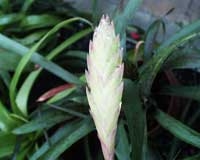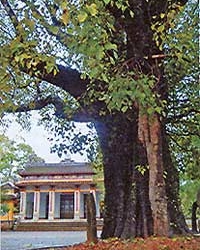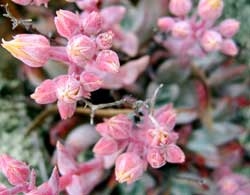Devoid of chlorophyll and sunlight, the ghost plant hides deep within the dark forests of Africa and Asia.
It thrives by parasitizing root fungi and extracting nutrients from its host.
Thriving in the Dark Forests
When strolling through the dimly lit forests of America and Asia from June to September, one might encounter the ghost plant (scientific name: Monotropa uniflora), also known as the Indian pipe or ghost pipe. This plant is white due to its spectral appearance and is easily mistaken for a mushroom because of its unusual pale color. They are perennial herbaceous plants that grow to heights of 10 to 30 cm.
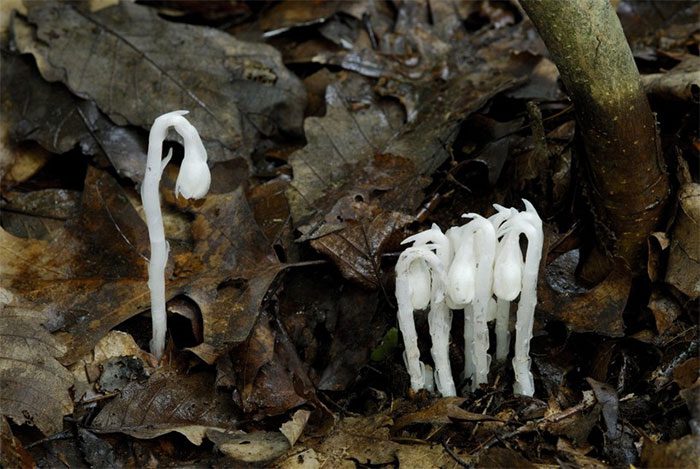
The ghost plant is opaque white.
Ghost plants often appear in clusters, growing near decaying tree stumps. Due to their delicate nature and resemblance to frozen jelly, ghost plants are sometimes referred to as ice plants. Their stems are covered with modified leaves that look like scales, known as bracts. When mature, the stem can turn dark brown with black spots.
The ghost plant lacks chlorophyll and cannot produce energy from sunlight like most other plants. Because it does not rely on sunlight for growth, the ghost plant can thrive in the darkness of ancient forests.
The flowers of the ghost plant have five petals, typically drooping towards the ground. After being pollinated by insects, the flowers grow upright along the stem. Bumblebees are a typical pollinator, receiving a bit of nectar and sweet pollen as a reward for their efforts.
The roots of the ghost plant are brittle and nutrient-rich. They are a favorite snack of grizzly bears, which often dig up ghost plant roots for a treat.
The ghost plant belongs to the Ericaceae family, also known as heaths or rhododendrons. This family includes over 4,000 known species, including famous members like blueberries and cranberries. The pale color and sturdy texture of the ghost plant often lead many to mistakenly believe it is a fungus.
In reality, it is not a fungus, but fungi play a crucial role in how the ghost plant obtains nutrients. This brings us to its eerie behavior.
Extracting Nutrients from Its Host
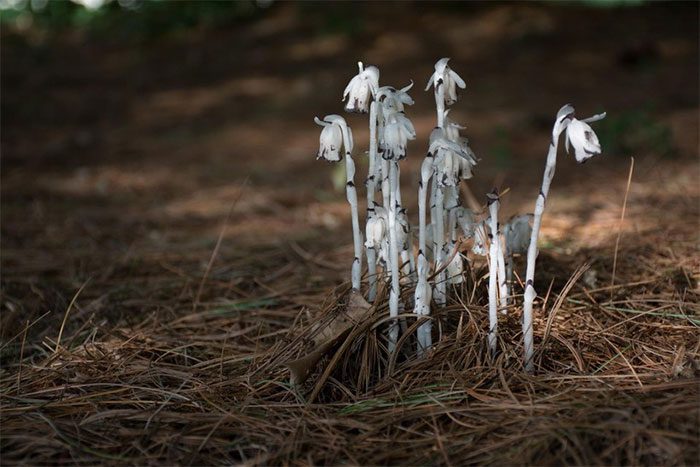
They extract nutrients from root fungi to grow.
The ghost plant is one of about 3,000 heterotrophic plant species that need to absorb nutrients from external sources, and heterotrophic plants do this in very peculiar ways.
Insect-eating plants like the Venus flytrap, Pinguicula, sundews, and pitcher plants capture and digest insects for nutrients. Parasitic plants like dodder extract nutrients from their host plants.
Like dodder, the ghost plant is a parasitic species and lacks the chlorophyll necessary to produce its own food from sunlight. The ghost plant was once thought to be a saprotrophic species, meaning it fed on dead or decaying matter. However, recent research has discovered that instead of consuming decaying material, it acts like a “vampire,” extracting nutrients from other species—in this case, fungi.
These fungi live around the roots of trees in the dark, deep forests where ghost plants are found. In fact, nearly all terrestrial plants have roots infected with mycorrhizal fungi. They exist in a relationship known as mutualistic symbiosis.
Through the process of photosynthesis, chlorophyll-containing plants use sunlight to convert carbon dioxide into sugars and other nutrients. These nutrients are provided to the fungi by the host plant through its roots.
In turn, the fungi supply water and minerals to the plant. Through this “mutually beneficial” relationship, the nutrients produced by one host plant can be shared with other plants through an underground fungal network. However, the relationship between the root fungi and the ghost plant is not this beneficial symbiosis.
The relationship between the ghost plant and the fungi resembles that of a parasite and host, as the ghost plant offers no benefits to the fungi. It merely siphons off nutrients and energy from the fungi like a parasite because it lacks chlorophyll and cannot photosynthesize.
Typically, when a parasite attaches to a host, the host will fight back, but somehow, science has yet to uncover how the ghost plant deceives fungi into believing their relationship is symbiotic. This allows them to freely extract nutrients from the root fungi for growth.
Through the process of pollination, the ghost plant disperses thousands of tiny seeds into the environment. These seeds settle to the ground, attach to the root fungi, and begin to siphon off its nutrients for growth. It then sprouts into a new plant and continues to cling to this parasitic lifestyle.
When the host plant photosynthesizes, the root fungi absorb nutrients from the plant’s roots while the ghost plant extracts nutrients from the fungi. This “theft” behavior allows them to thrive in the shade. However, after the ghost plant dies, it returns all the nutrients it extracted from the host and the root fungi back to the earth.
The ghost plant can be quite fragile, making it impossible to propagate them at home. This species is entirely dependent on humid, dark climatic conditions and the “three-way relationship” between itself, fungi, and the host plant.
Many explorers have reported that the ghost plant is edible. It is described as having a rather bland taste when eaten raw, but when cooked, it resembles the flavor of asparagus. However, this plant contains glycosides, a substance that can affect health if consumed in large quantities, so it cannot be used as food.








































